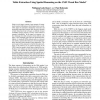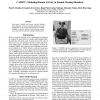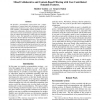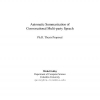AAAI
2004
14 years 1 months ago
2004
In this paper we discuss a deployed application at Ford Motor Company that utilizes AI technology for the analysis of potential ergonomic concerns at our assembly plants. The manu...
AAAI
2006
14 years 1 months ago
2006
AAAI
2006
14 years 1 months ago
2006
Tables on web pages contain a huge amount of semantically explicit information, which makes them a worthwhile target for automatic information extraction and knowledge acquisition...
AAAI
2004
14 years 1 months ago
2004
We present CAMEO, the Camera Assisted Meeting Event Observer, which is a physical awareness system designed for use by an agent-based electronic assistant. CAMEO is used to observ...
AAAI
2006
14 years 1 months ago
2006
We describe a recommender system which uses a unique combination of content-based and collaborative methods to suggest items of interest to users, and also to learn and exploit it...
AAAI
2004
14 years 1 months ago
2004
AAAI
2004
14 years 1 months ago
2004
AAAI
2006
14 years 1 months ago
2006
AAAI
2006
14 years 1 months ago
2006
When humans approach the task of text categorization, they interpret the specific wording of the document in the much larger context of their background knowledge and experience. ...
AAAI
2004
14 years 1 months ago
2004
We introduce mCP nets, an extension of the CP net formalism to model and handle the qualitative and conditional preferences of multiple agents. We give a number of different seman...




